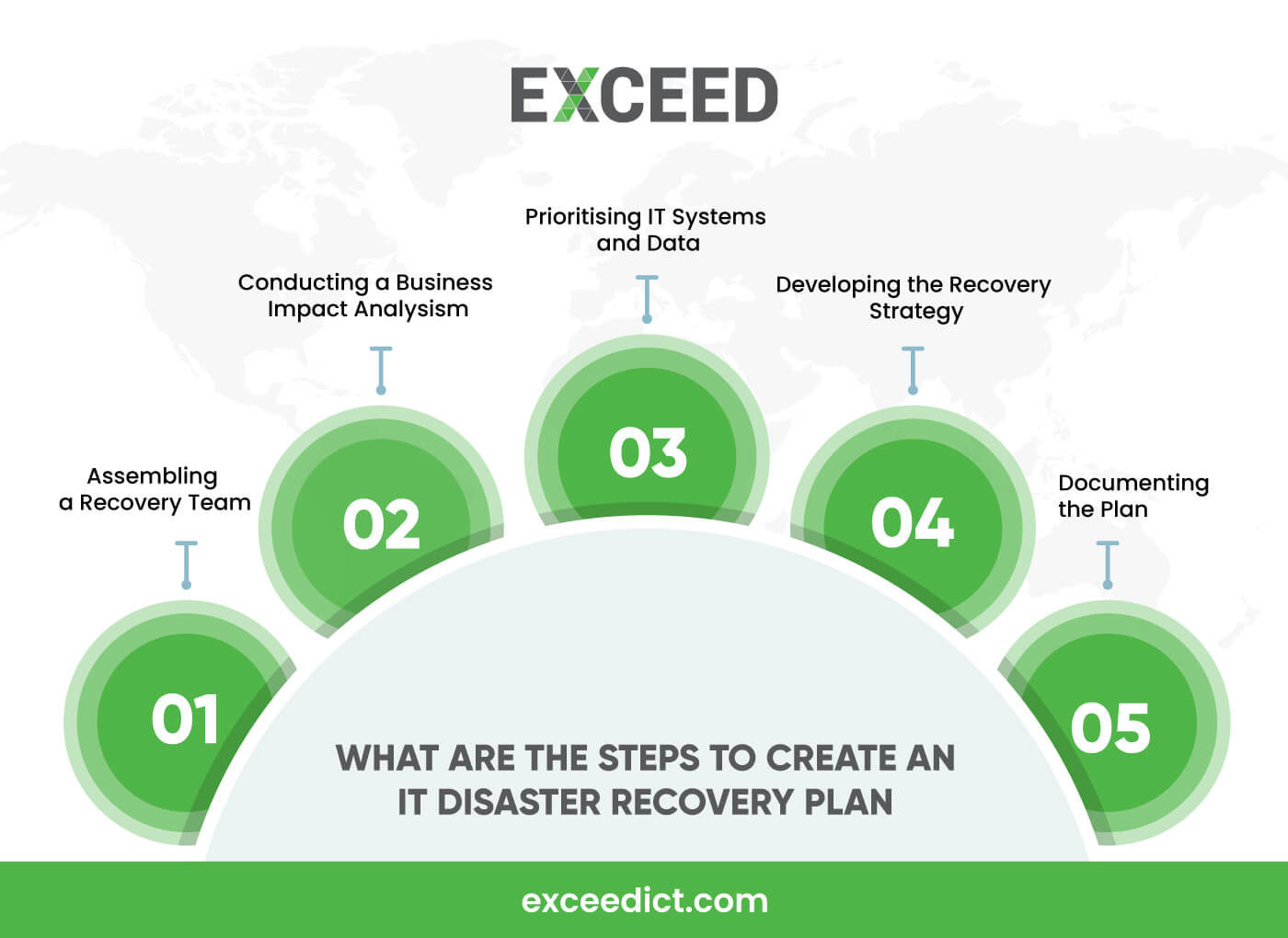
IT Disaster Recovery Plan – Steps, Strategy, and Legal and Regulatory Considerations
 In today’s technology-driven world, businesses heavily rely on their IT infrastructure to operate efficiently. However, the risk of IT failures or disasters can’t be ignored. That’s where an IT disaster recovery plan comes into play. This comprehensive guide will walk you through the steps of creating an effective IT disaster recovery plan specifically tailored for Australian businesses.
In today’s technology-driven world, businesses heavily rely on their IT infrastructure to operate efficiently. However, the risk of IT failures or disasters can’t be ignored. That’s where an IT disaster recovery plan comes into play. This comprehensive guide will walk you through the steps of creating an effective IT disaster recovery plan specifically tailored for Australian businesses.
In a digitally connected landscape, businesses face the ever-present threat of IT disruptions that can result from various factors such as cyberattacks, natural disasters, or technical failures. An IT disaster recovery plan is a preemptive strategy that ensures the continuity of critical operations, minimises downtime, and safeguards sensitive data.
Understanding IT Disaster Recovery
IT disaster recovery involves a set of policies and procedures designed to recover and protect a business’s IT infrastructure in the event of a disruption. This can encompass hardware, software, networks, and data.
Importance of IT Disaster Recovery in Australia
Australia, with its unique geographical location and susceptibility to natural disasters, underscores the importance of robust disaster recovery planning. From bushfires to floods, the country’s businesses must be prepared to swiftly recover their IT operations.
Essential Elements of an IT Disaster Recovery Strategy
 Identifying Critical IT Systems and Data
Identifying Critical IT Systems and Data
The first step is to identify the IT systems and data that are critical for business operations. Categorise them based on their importance and potential impact on the business.
Risk Assessment and Analysis
Evaluate potential risks that could lead to IT disruptions. This includes external threats like cyberattacks and internal risks such as equipment failures.
Establishing Recovery Time Objectives and Recovery Point Objectives (RTO and RPO)
RTO defines the maximum downtime a business can tolerate, while RPO determines the maximum data loss acceptable. These metrics guide the recovery process.
Developing a Contingency Plan
Create a step-by-step plan detailing how to restore IT functions. Include procedures for data backup, system recovery, and alternative communication methods.
Communication Protocols
Clear communication is vital during recovery efforts. Establish protocols for notifying stakeholders, employees, and customers about the situation and progress.
Regular Testing and Updates
Testing the recovery plan at regular intervals ensures its effectiveness. Update the plan to reflect changes in IT infrastructure or business operations.
What are the Steps to Create an IT Disaster Recovery Plan

Assembling a Recovery Team
Designate individuals responsible for executing the recovery plan. Each team member should understand their role and responsibilities.
Conducting a Business Impact Analysis
Understand the potential consequences of IT disruptions on various business units. This helps prioritise recovery efforts.
Prioritising IT Systems and Data
Not all IT components are equal. Determine which systems and data require immediate restoration versus those that can wait.
Developing the Recovery Strategy
Based on the analysis, formulate a recovery strategy for each IT component. This could involve redundant systems, backup data centres, or cloud solutions.
Documenting the Plan
Compile all the information into a comprehensive document. This should include the recovery steps, contact lists, and technical details.
Legal and Regulatory Considerations in Australia
Data Privacy Laws
Ensure that the recovery plan aligns with Australian data privacy laws, such as the Privacy Act. Safeguarding customer and employee data is crucial.
Industry Regulations
Certain industries, like finance and healthcare, have specific regulations for data protection and continuity. Adhere to these guidelines in your recovery plan.
Collaboration with Third-Party Service Providers
Cloud Service Providers
Partner with reputable cloud service providers to store critical data and applications off-site. This adds an extra layer of security and accessibility.
Data Centers and Hosting Services
For businesses with on-premises infrastructure, collaborating with data centres or hosting services can provide backup options and alternative environments.
Testing and Training for Readiness
Types of Testing
Regularly test the recovery plan through simulations and drills. This helps identify gaps and areas that need improvement.
Employee Training and Awareness
Educate employees about the plan’s basics and their roles during recovery. Awareness can minimise confusion and enhance the effectiveness of the plan.
Continuous Improvement of the IT Disaster Recovery Plan
Disaster recovery is an evolving process. Regularly assess and enhance the plan as your business and technology landscape change.
Creating an IT disaster recovery plan is not a choice but a necessity for businesses operating in Australia’s dynamic environment. By following these steps and tailoring them to your organisation’s unique needs, you can ensure operational resilience and protect what matters most – your business’s continuity.
Frequently Asked Questions
 Is an IT disaster recovery plan only for large corporations?
Is an IT disaster recovery plan only for large corporations?
Not at all. Regardless of size, any business that relies on IT systems should have a disaster recovery plan.
How frequently should I assess the effectiveness of my disaster recovery plan?
Regular testing is recommended, at least annually or whenever there are significant changes to your IT infrastructure.
Can outsourcing IT services impact my disaster recovery plan?
Yes, it can. Ensure that your service providers have their own robust disaster recovery plans in place.
What should I include in employee training for disaster readiness?
Employees should understand the basics of the plan, their roles, and how to report IT issues promptly.
How does cloud computing enhance disaster recovery?
Cloud services offer remote data storage and quick scalability, enabling faster recovery and reduced downtime.
You may also like to know more about
- Disaster Recovery Plan For Ensuring Business Continuity in Challenging Times.
- Business Continuity Planning vs Disaster Recovery Planning.
- Step by Step Guide for a business continuity plan.
- What is Business Continuity Planning? Importance, Risk Assessment, & Core Objectives.
- Understanding the Disaster Recovery Planning – steps, benefits and best practices.
- Disaster Recovery Planning To Ensure The Connectivity in Crisis.
Stay connected with EXCEED ICT
Stay connected with EXCEED ICT by joining our social networks (given at footer). Get the latest updates, news, and tips for enterprise device deployment. Follow us on Twitter, Facebook, and LinkedIn for the best enterprise device deployment solutions.
Help us to improve our enterprise by rating us on Google Maps. Your feedback and comments are valuable to us and will be used to make our services even better.



